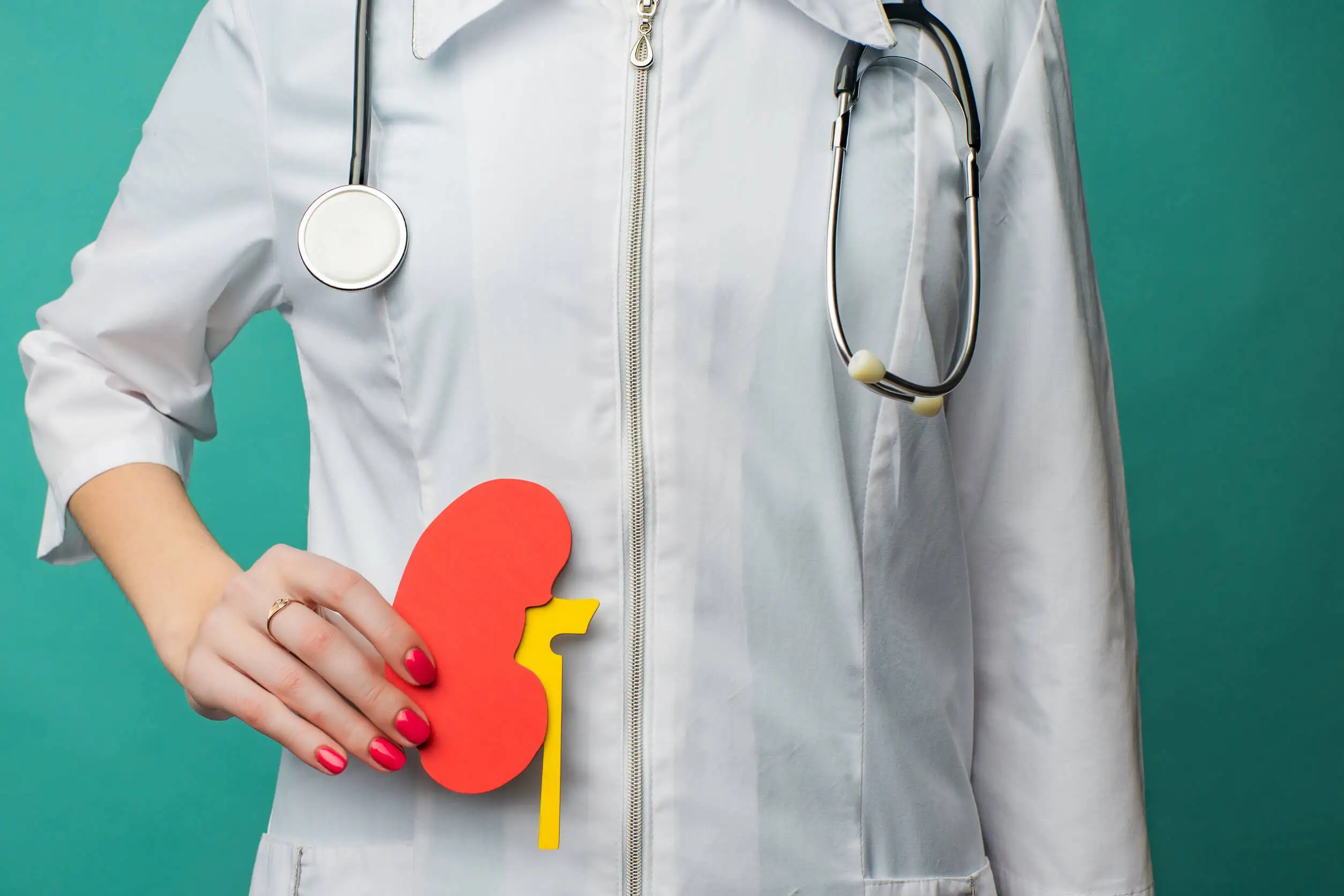Urea and Creatinine Urine Test: Understanding the Results

The urea and creatinine urine test is used to find out how well the kidneys are functioning, in relation to their ability to filter waste products from the blood. This test is requested when there are symptoms associated with kidney disease.
It’s also used when a patient is undergoing treatment for kidney problems or has any condition that could affect the functioning of these organs. In this sense, it’s worth mentioning diabetes and arterial hypertension.
As for the results, the values of creatinine in urine in adults, considered normal, range between 15 and 25 mg/kg of weight/24 hours. Those of urea are between 12 and 20 grams in 24 hours.
Urea and creatinine: what are they and what is their function?
Urea is a waste substance produced by the liver during the process in which the proteins in the food we eat are metabolized into amino acids. This generates ammonia, which is then transformed into urea.
It’s important to note that urea nitrogen is the means of transport used by the body to eliminate excess nitrogen. In fact, the laboratory measurement is more accurately referred to as blood urea nitrogen, or BUN.
Urea is released by the liver, and then passes into the blood. It then reaches the kidneys, where it’s filtered and finally eliminated through the urine.
Creatinine is another waste substance, a by-product of creatine. It’s produced by the muscles as a natural consequence of their normal activity. The excretory system also filters creatinine from the blood to expel it from the body in the urine.
When there are kidney problems, the values of both substances tend to increase.

You may also be interested in: Is Creatine Safe for the Kidneys?
Why do a urea and creatinine test?
A urea and creatinine test is requested when a person has symptoms of uremia or if there’s renal dysfunction, with a view to monitoring the effectiveness of the treatment or the body’s response. This is even carried on on patients on dialysis.
It may also be recommended when the patient has a condition that may affect the onset or worsening of kidney disease, or to evaluate kidney function in patients with chronic diseases, such as diabetes, high blood pressure and congestive heart failure.
It’s also performed if there’s a family history of kidney problems or if certain symptoms are present, including the following:
- Cloudy urine
- Loss of appetite
- Fluid retention
- Pain or burning when urinating
- Change of color in the urine
- Frequent urination with a decrease in the amount excreted
On the other hand, most pathologies affecting the liver can have an impact on creatinine levels. Thus, if there’s a liver injury or disease, the concentration of this substance in the urine may decrease or increase.
Read more: Causes of Foamy Urine and When to Seek Help
How is the test performed?
The urea and creatinine test can be requested as part of the so-called renal profile. It’s also part of a complete metabolic panel, in which electrolytes, minerals, protein, and glucose are measured in the urine.
Creatinine and urea are tested in both blood and urine. In the latter case, the patient should collect all excretion in a container over a 24-hour period, keeping the sample refrigerated.
No special type of preparation is required. However, for creatinine, the person may be asked not to consume red meat up to 1 day before the test.
What do the results indicate?
The values considered normal for urea and creatinine in urine may vary according to the standards of a country or even from one laboratory to another, even by the technique used for quantification.
Normal creatininuria ranges from 15 to 25 mg per kilogram of the patient’s weight in 24-hour urine. Urea nitrogen values are between 12 and 20 grams total, excreted in 24 hours.
Creatinine may have lower values in women.
Elevated concentrations may signify deterioration of renal function. However, other influencing factors, such as age, should be considered.
The concentration in adults over 60 years of age is slightly higher.
Elevated urine urea
In certain situations, urea nitrogen levels in the urine may be elevated. This may indicate that there’s a large amount of urea nitrogen being metabolized by the liver or that the kidneys aren’t working properly to filter out toxins.
A decrease in these levels isn’t usually a cause for concern. In fact, this is rare, and may be due to a lack of protein in the diet, malabsorption, or overhydration. However, there are also other causes, such as pregnancy and liver failure.
Among the conditions that can lead to an increase in urine urea are the following:
- Dehydration
- Renal insufficiency
- High protein diet
- Acute myocardial infarction
- Congestive heart failure

When urea levels increase, toxicity may occur, leading to uremic syndrome or uremia.
High urine creatinine
High urine creatinine may be a temporary condition, such as pregnancy, high protein intake, intense physical activity, and a reaction to some medications. It may also be a sign of a disease affecting kidney function:
- Bacterial infections
- Autoimmune diseases (such as lupus)
- Heart failure
- Diabetes
What to do if urea and creatinine values change?
Once the urine urea and creatinine test has been performed and the results are known, it will be the doctor who will determine the treatment to follow. This, of course, will depend on the cause.
If it’s a situation associated with exercise, diet, or medication, the person should follow the doctor’s recommendations. Renal insufficiencies, on the other hand, are more complex and require an interdisciplinary evaluation.
All cited sources were thoroughly reviewed by our team to ensure their quality, reliability, currency, and validity. The bibliography of this article was considered reliable and of academic or scientific accuracy.
- Casamen Anasi A. Prevalencia de alteraciones séricas de urea y creatinina en adultos mayores con síndrome metabólico, atendidos en el Centro de Salud “A” Amaguaña durante el periodo enero-diciembre 2017. Quito: Universidad Central del Ecuador, 2018.
- Estévez del Toro M, Chico Capote A, Jiménez Paneque R, et al. Supervivencia en pacientes cubanos con lupus eritematoso sistémico: influencia de las características iniciales de la enfermedad. Rev cubana med. 2008; 47(3). Disponible en: http://scielo.sld.cu/scielo.php?script=sci_arttext&pid=S0034-75232008000300003&lng=es.
- Iglesias P, Heras M, Díez J. Diabetes mellitus y enfermedad renal en el anciano. Nefrología (Madr.). 2014; 34(3): 285-292.
- Lagos A. Determinación de cistatina C e identificación de la relación con la creatinina sérica en el diagnóstico de insuficiencia renal en pacientes con diabetes mellitus tipo 2. Ambato – Ecuador: Universidad Técnica, 2017.
- Lou Arnal L, Campos Gutiérrez B, Cuberes Izquierdo M, et al. Prevalencia de enfermedad renal crónica en pacientes con diabetes mellitus tipo 2 atendidos en atención primaria. Nefrología (Madr.). 2010; 30(5): 552-556.
- Meyer T, Hostetter T. Uremia. N Engl J Med. 2007; 357: 1316-1325. DOI: 10.1056/NEJMra071313
- Ordóñez Sánchez J, Gallardo León J, Patiño Zambrano V, Alvarado Álvarez A. Nivel de creatinina en pacientes diabéticos hospitalizados en el área de clínica. RECIMUNDO: Revista Científica de la Investigación y el Conocimiento. 2017; 4(1): 610-617.
- Rivas Liza L, Zavala Blas C. Niveles séricos de urea y creatinina en los pobladores adultos de 18-60 años de edad del Asentamiento Humano Virgen del Socorro – Parque Industrial – distrito La Esperanza – Trujillo. marzo del 2010”. Trujillo (Perú): Universidad Nacional, 2010.
- Rosado Barzola E, Ramos Villalobos M. Relación de valores de la urea y creatinina en los adultos mayores de la Casa Hogar San Martin de Porres. Lima: Universidad Norbert Wiener, 2019.
This text is provided for informational purposes only and does not replace consultation with a professional. If in doubt, consult your specialist.








